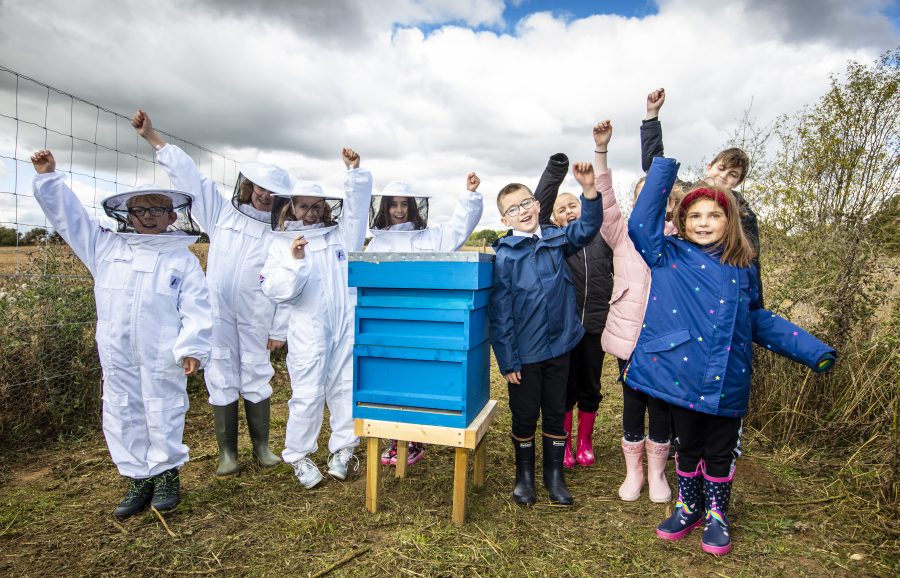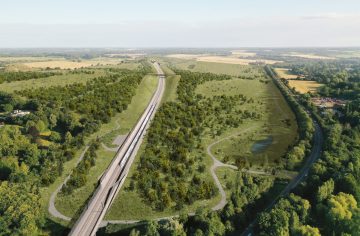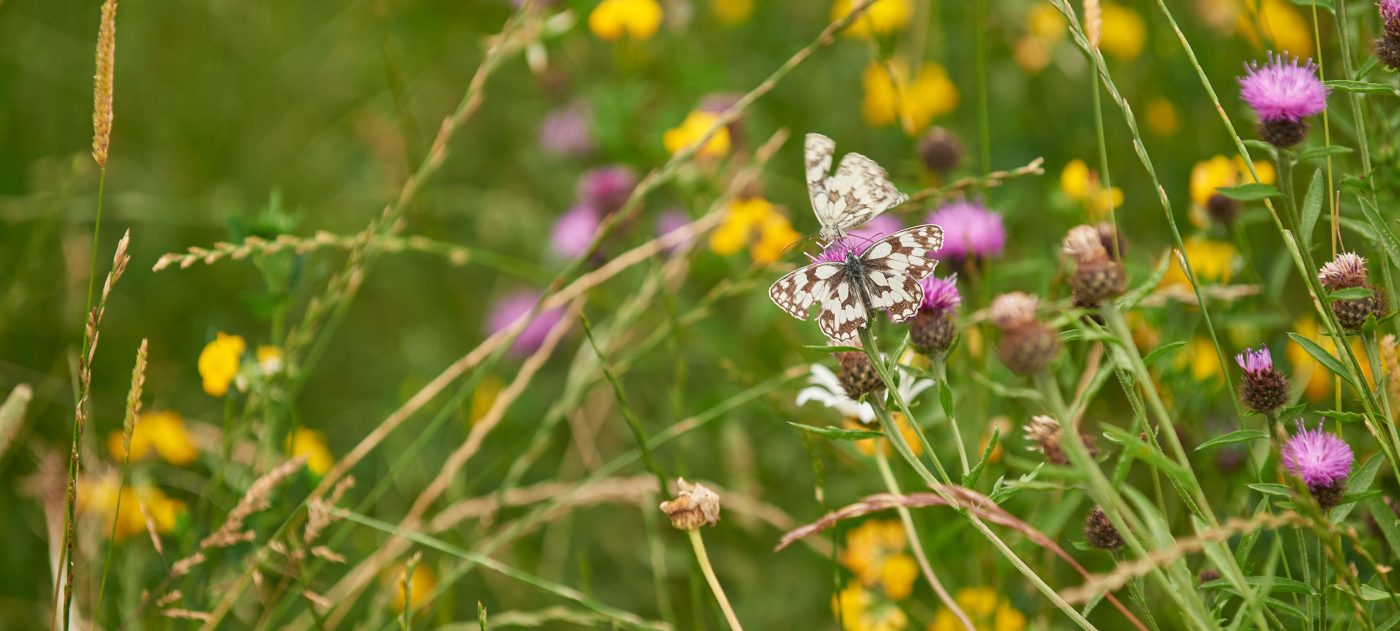
HS2 and biodiversity
Back in 2013 we became the first major infrastructure project in the world to commit to no net loss of biodiversity. No net loss of biodiversity for HS2 means ensuring that, by the time trains are running, wildlife habitats will be restored to the same levels found before construction began.
No net less reporting
How we measure biodiversity
In line with all other development projects that measure their biodiversity balances, we use a specialised tool called a ‘biodiversity metric’ that was developed in consultation with Natural England. This tool allows us to assign a numerical value to existing habitats (present before construction) and the habitats that will be created or restored as part of works (after construction), measured in ‘biodiversity units’.
No Net Loss in biodiversity is achieved when the biodiversity unit score after construction is balanced with the score before construction. Only when the biodiversity unit score after construction is higher than before construction is biodiversity net gain achieved.
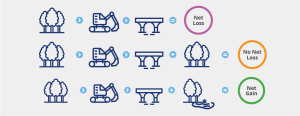
We measure biodiversity in three separate ways: area habitats (such as grasslands, woodlands and wetlands), hedgerows and watercourses. Our biodiversity goals are measured against progress made across each of these habitat types.
How we collect data
The process of collecting and using ecology data to inform our biodiversity accounting calculations includes recording data in the field, and careful review and assurance before it is run through the biodiversity metric:
Find out more information on biodiversity net gain.
The use of a biodiversity metric to record the impact of development on biodiversity has evolved significantly. Over a decade ago, HS2 was an early adopter of using a biodiversity metric and as Defra have developed their biodiversity metric over the intervening years. We have both adjusted our approach for biodiversity accounting to align where possible and fed into the development of industry metrics through workshops.
We use the biodiversity metric as an ‘accounting tool’ and compare the habitats present before and after construction to calculate the losses and gains in biodiversity units from the delivery each phase of HS2. We design our habitats to address our impacts and ensure design is appropriate for the local areas. Once we design our habitats, we then run these through a biodiversity metric. We do not use the biodiversity metric to inform our compensation.
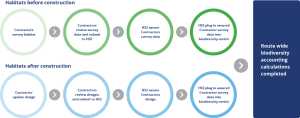
Beyond the numbers
Delivering our biodiversity goals is more than just numbers. Factors like ecological connectivity, impacts on particular species or habitats and climate resilience are not captured by biodiversity metrics, but they are captured in our wider processes for example, protected species licencing.
Our biodiversity goals outlined above cover non-irreplaceable habitats only. For our approach and latest stats relating to irreplaceable habitats, see below.
Protecting wildlife
We work closely with environmental organisations and employ ecological specialists to ensure we protect and enhance wildlife as we build HS2.
As Britain’s biggest construction project, the sheer size and scale has allowed us to innovate in new and exciting ways, using the latest technologies to pioneer a greener, cleaner way to build railways and change the wider industry for the benefit of future infrastructure projects. This includes working with innovators within the natural environment, biodiversity and ecology sectors.
Our partnerships
The Great British Bee Project
The British Black Bee is Britain’s only native honeybee. It is smaller, furrier, and darker than the non-native honeybees found elsewhere in the UK that have escaped from managed beehives. Recently, due to habitat loss, climate change and viruses, the population of our native honeybee has plummeted, and populations are only just holding on in a few scattered locations across the UK.
Our partnership with the Great British Bee Project has resulted in 50,000 native bees now living in the 19 hives we installed across our habitat sites. All helping to support the wider eco-system through the bees’ vital process of pollination.
Colne Valley restoration
Our single biggest landscape and habitat creation project is in the Colne Valley on the edge of the Chiltern Hills. We are creating 127 hectares of new chalk grassland, woodland, wood pasture and wetland habitats – the equivalent of 178 football pitches, delivering significant biodiversity gains for the area.
To do this, we are recycling three million cubic metres of chalk taken from tunnel excavation, cutting our carbon emissions by reducing road haulage and waste treatment.
Almost 65,000 trees and shrubs and nearly 2 miles of new hedgerows will be planted, and people will be able to enjoy new connected green spaces with 2.7 miles of new footpath, cycling and horse-riding routes.
Dendra monitoring work
We’re working with Dendra whose cutting-edge drone and artificial intelligence technologies are helping us to plant and monitor 140-miles of green corridor we’re creating alongside the railways and will consist of seven million trees and shrubs
Dendra’s technologies help us identify the 46 different tree species planted along the route and assess whether they’re thriving or in need of help such as improving land conditions or mitigating invasive weeds.
NatureMetrics eDNA
We’re collaborating with NatureMetrics, using technology which sequences DNA into usable ecology information to show the distribution of species across landscapes and track how habitats change throughout the project life cycle. This helps us to monitor the progress of new trees we’ve planted alongside the railway.
Connected Places catapult and Bruntwood SciTech
Our partnership with Connected Places catapult and Bruntwood SciTech on the HS2 accelerator programme. allows us to create a legacy within infrastructure by scaling up innovative technologies to achieve a range of benefits, including fostering biodiversity. £100 million of funding and investment has supported over 20 startups, 15 pilot projects and over 400 new jobs created in the sciences and technical subject matter sectors.
Compliance
Regulation by public bodies
We ensure our works are designed to minimise disturbance to wildlife. We work closely with environmental regulators to ensure our ecological work is carried out in accordance with relevant wildlife law and regulations. This is set by the HS2 Phase One environmental statement, which accompanies the High Speed Rail (London – West Midlands) Bill.
Licencing
HS2 is undertaking one of the largest ecological surveys in the UK. Our surveys identify protected species along the route of the railway and ecological experts assess if they would be affected by our works. If the design cannot change to avoid a disturbance, we apply for the appropriate licences from Natural England.
More information on HS2 wildlife licensing can be located on Natural England’s website, the governmental body that enforces environmental protection across the UK: High Speed 2 (HS2) Wildlife Licensing (naturalengland.org.uk).
Ecological review group
We have an appointed independent review group, with representatives from Natural England, the Environment Agency, Local Wildlife Trusts, the Woodland Trust and Local Authorities who review our mitigation, data collection and reporting. Through this external review group, HS2 are held to the highest levels of ecological protection.
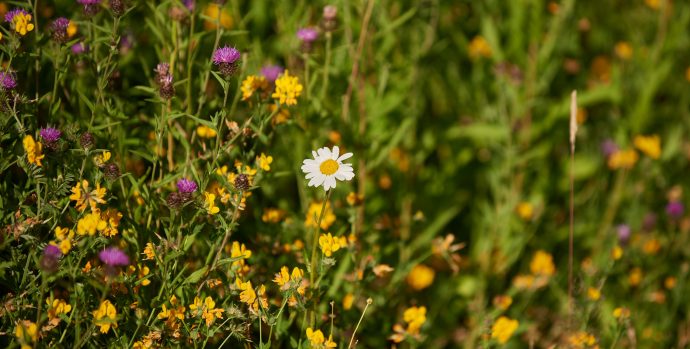
Our Wildlife Licences
Natural England’s role in assessing and granting wildlife licences for HS2 works.
ViewHow we're managing construction impacts on the environment

Air quality
HS2 will cut emissions, improve air quality and support a net-zero carbon economy.

Construction noise and vibration
We take all reasonable steps to minimise effects of sound, noise and vibration.

Water supply and management
Protection of the water environment is one of our fundamental commitments.
